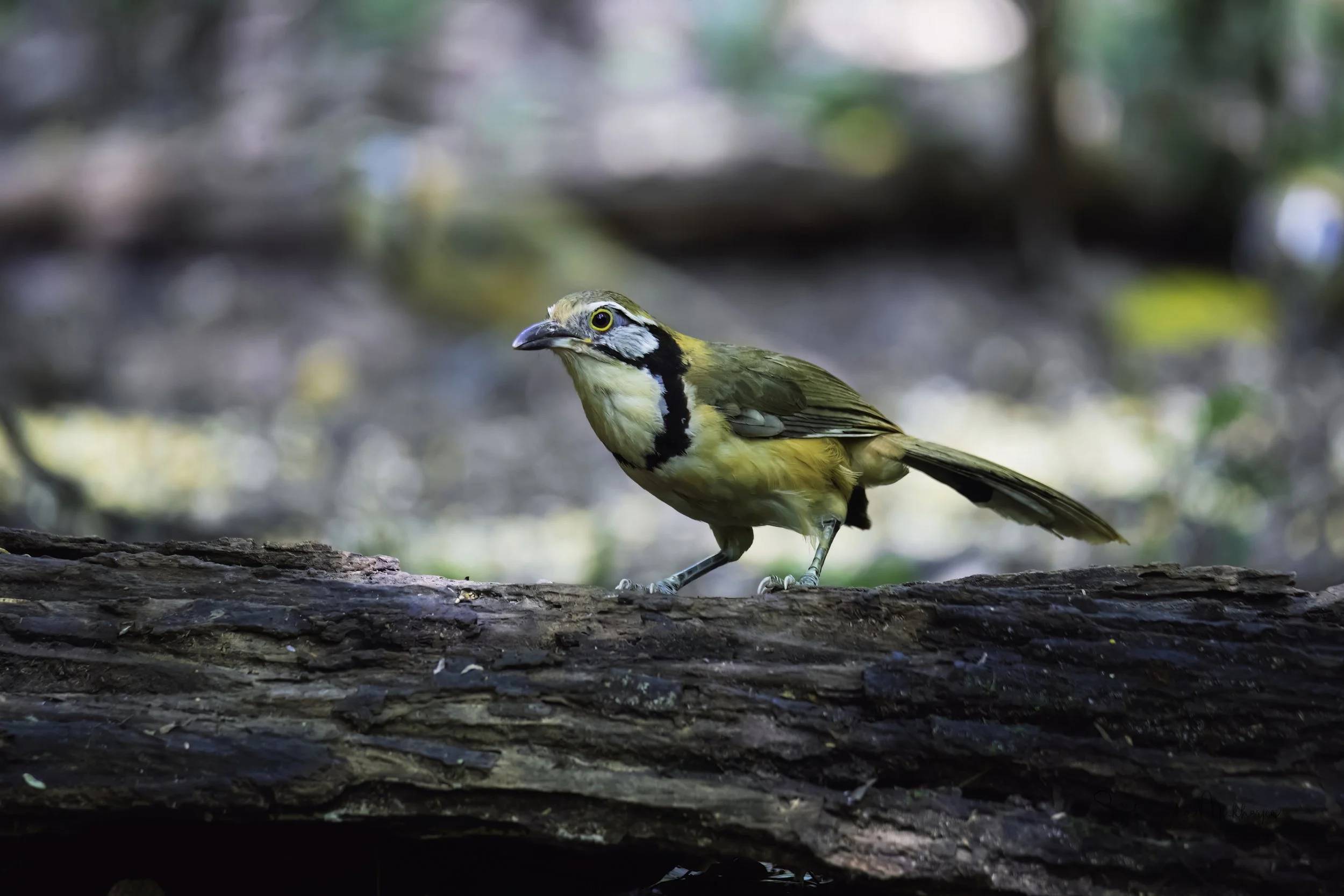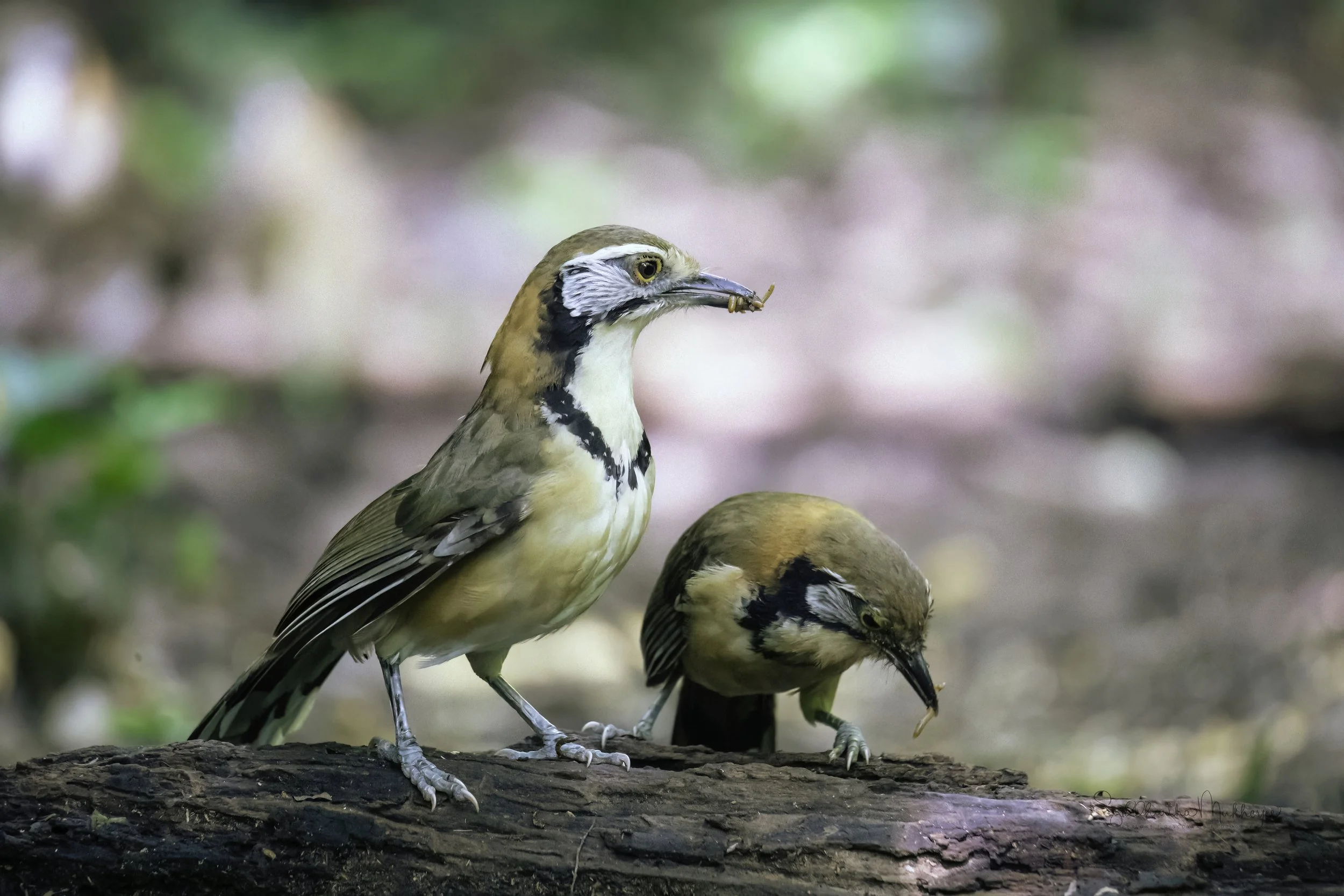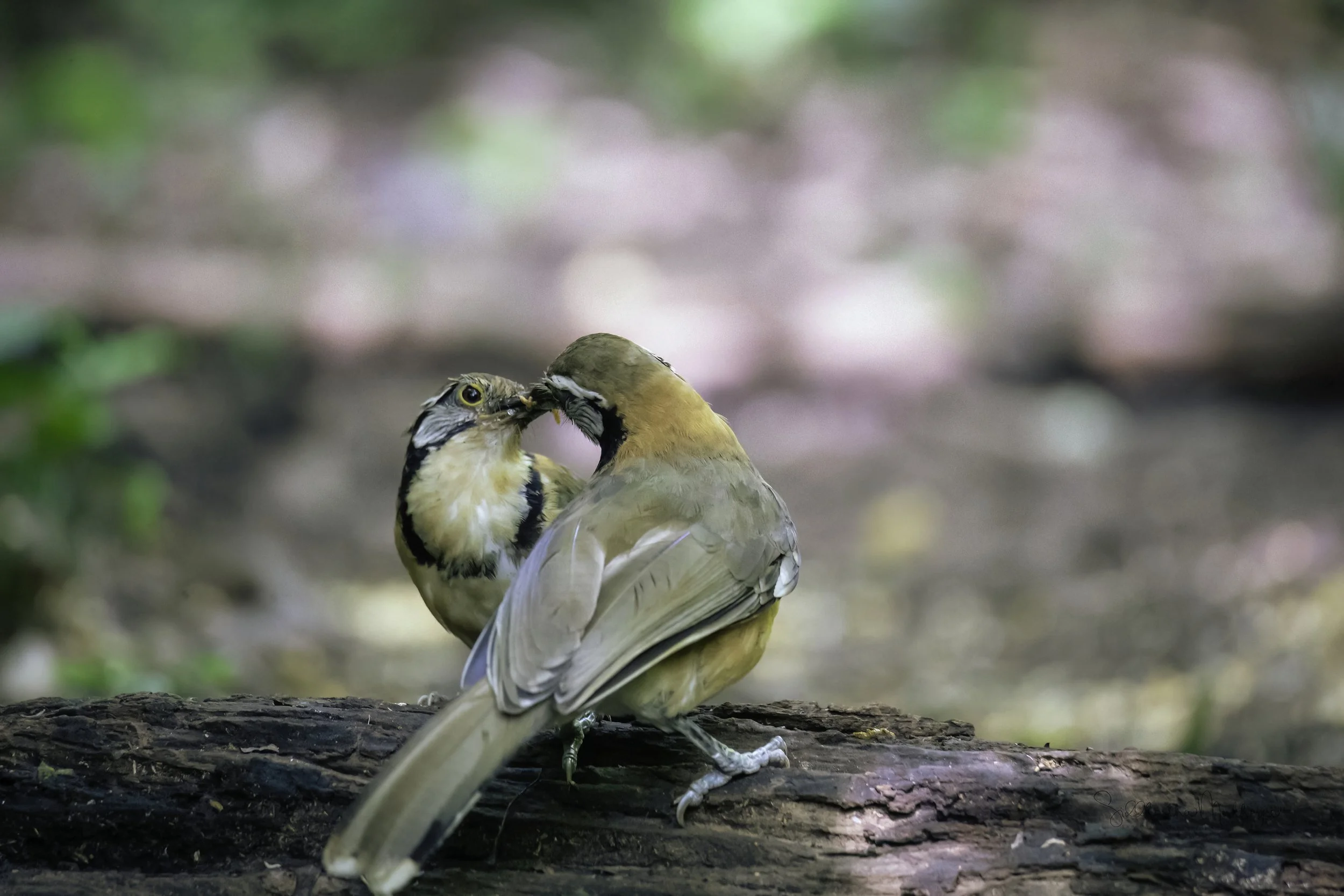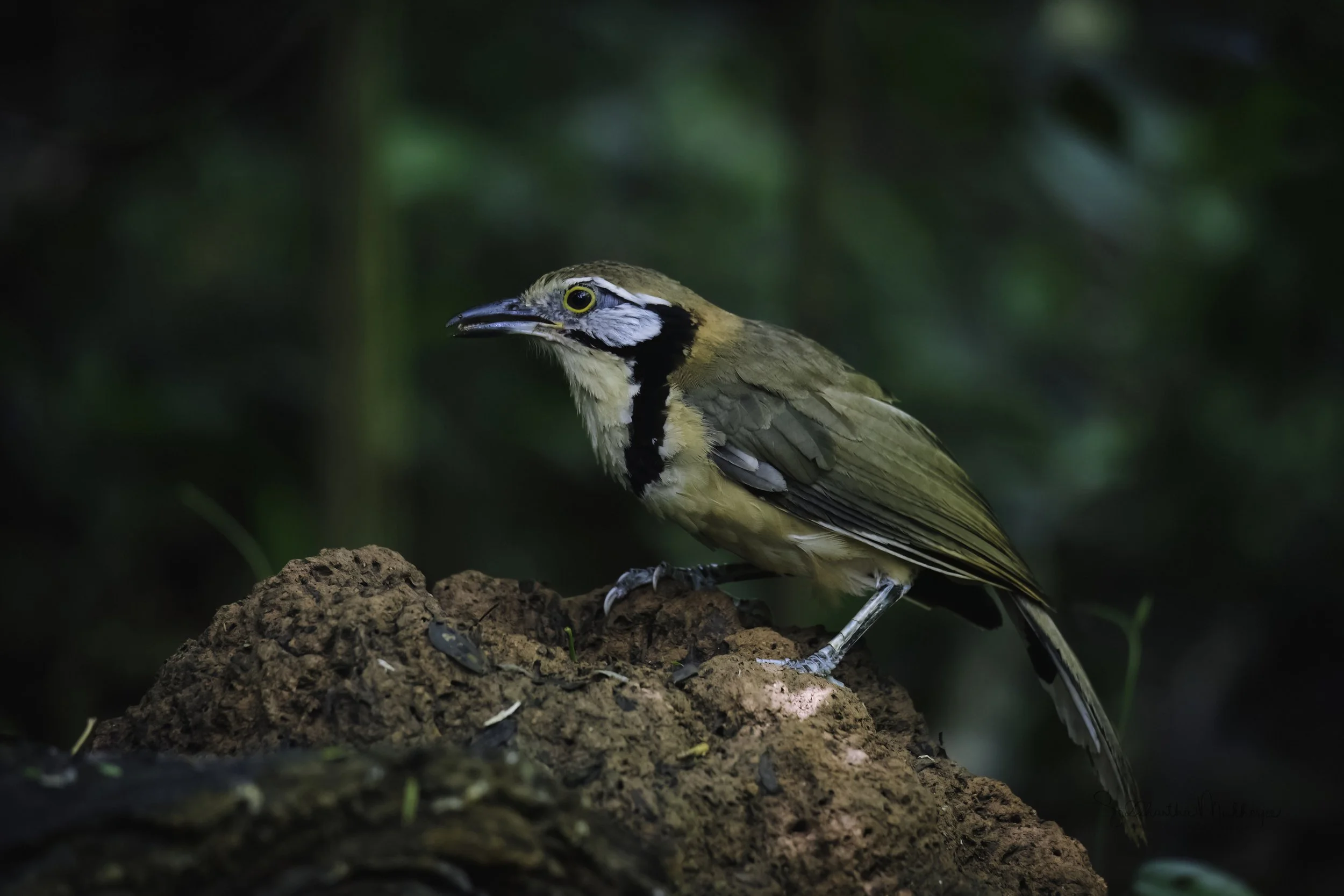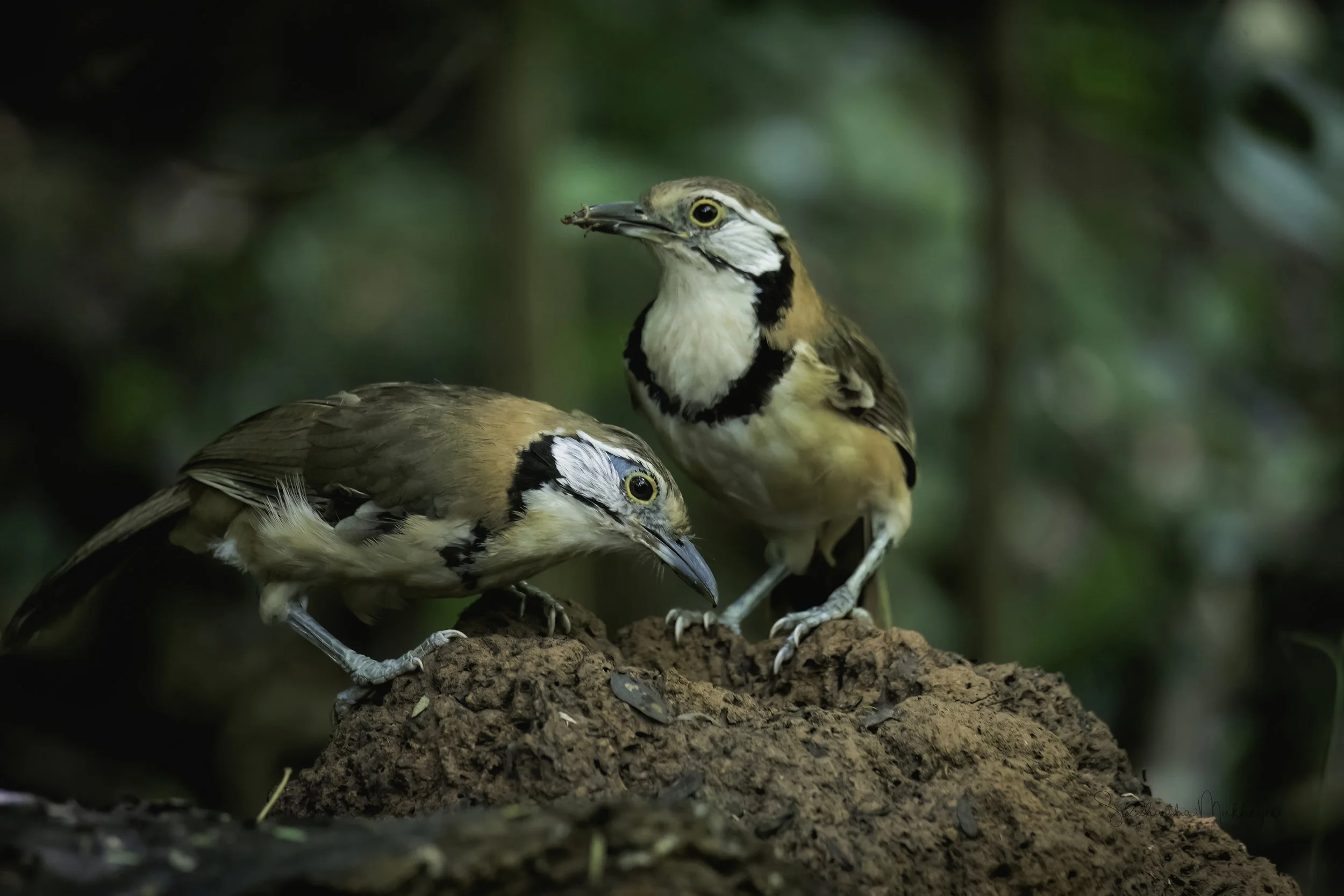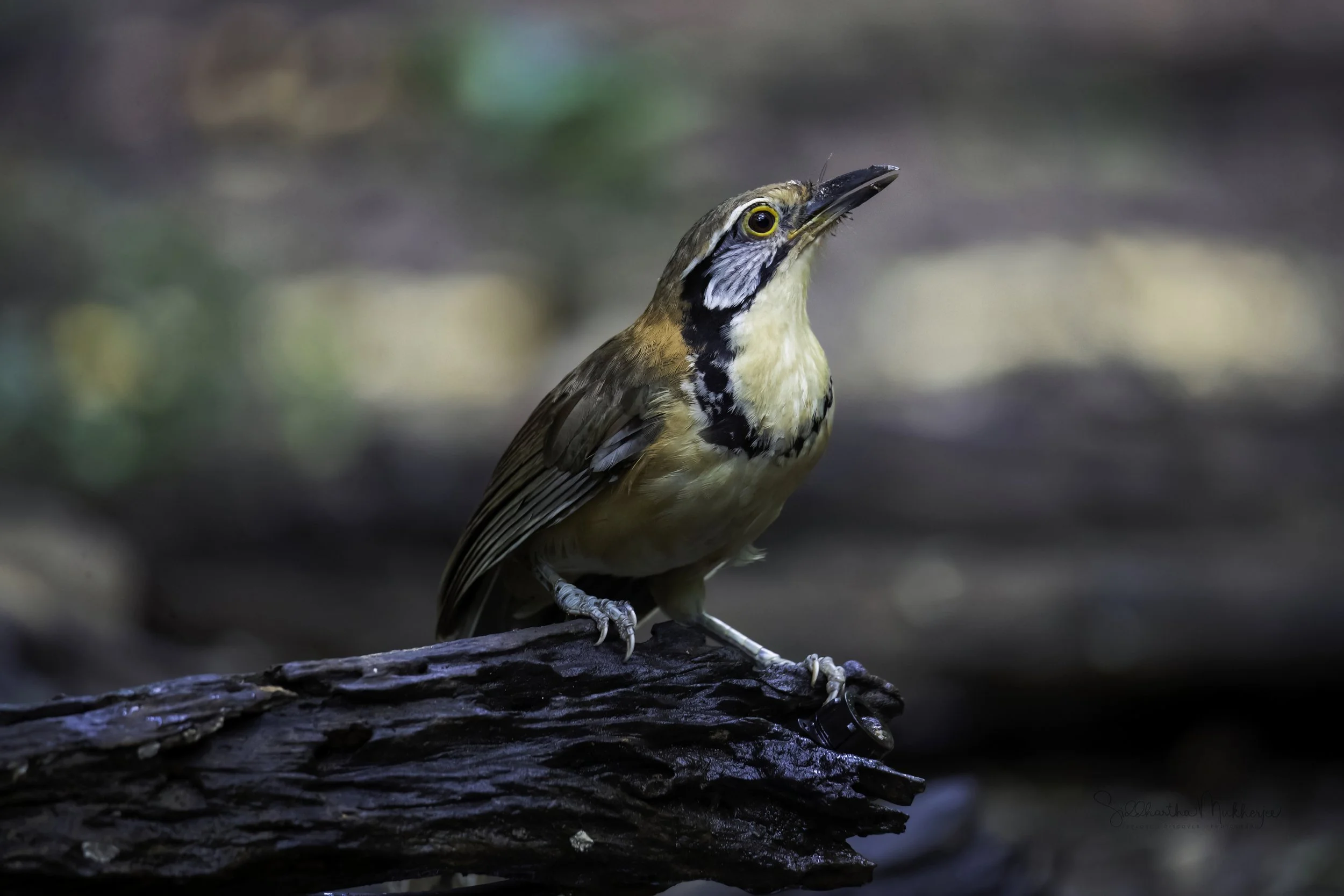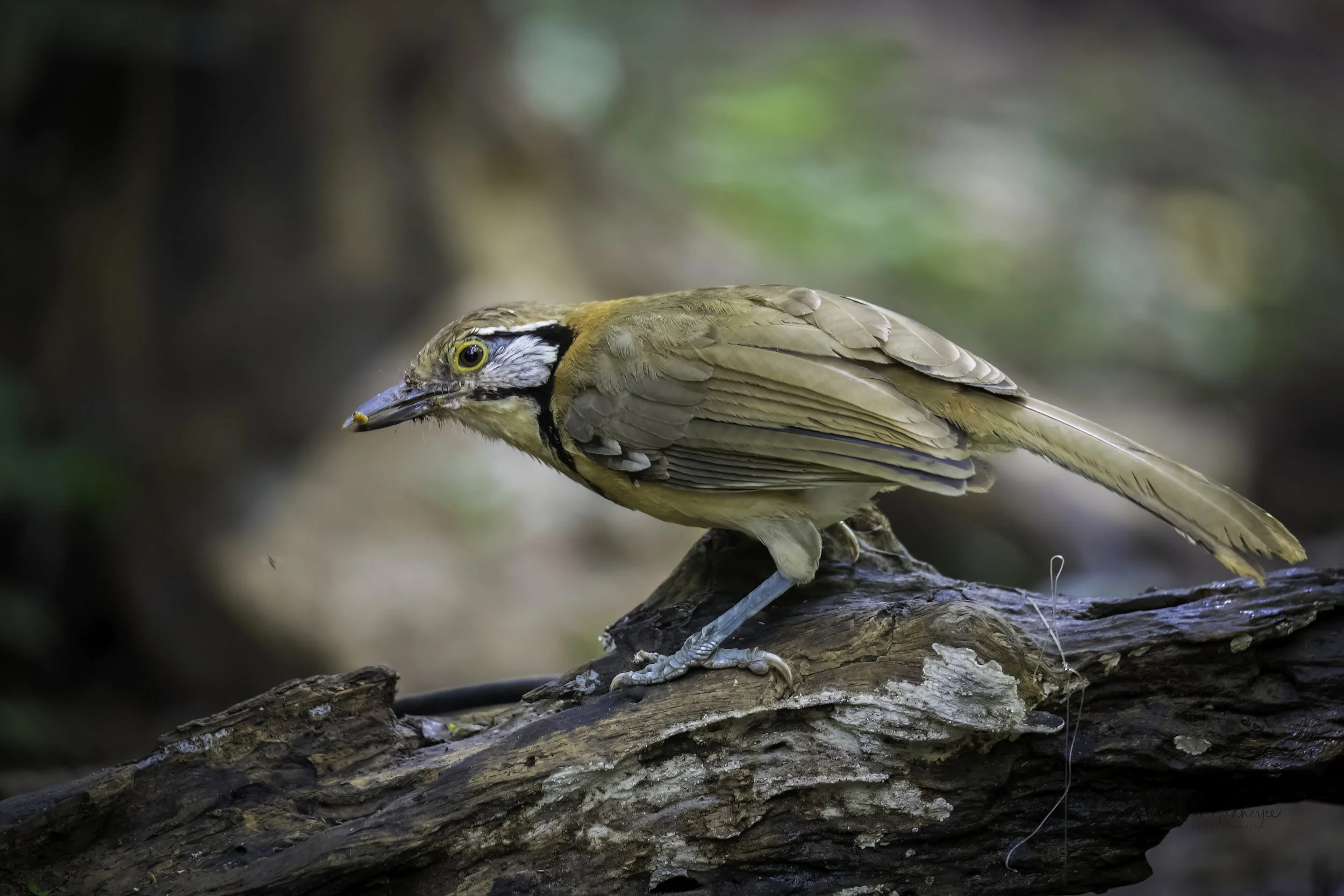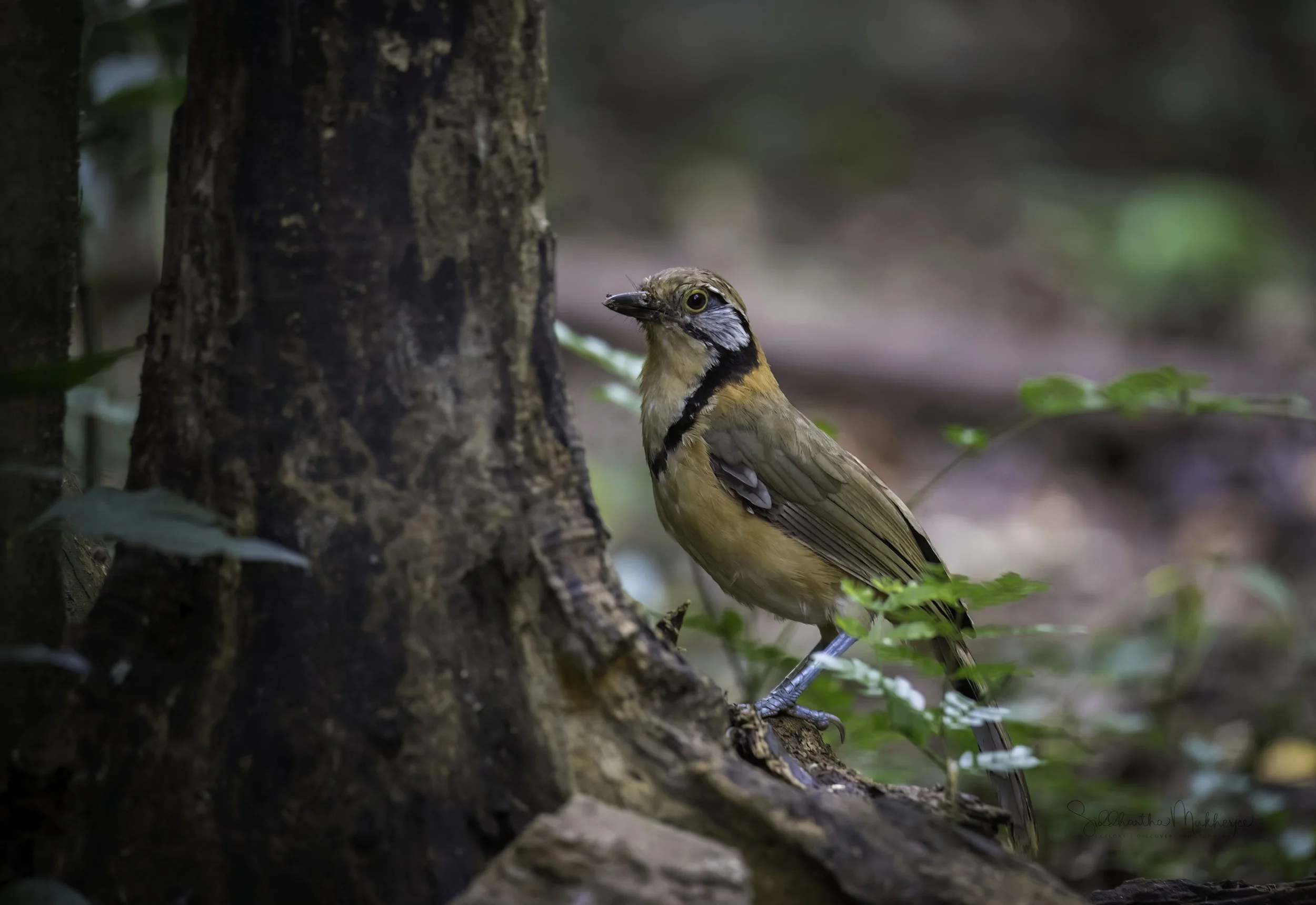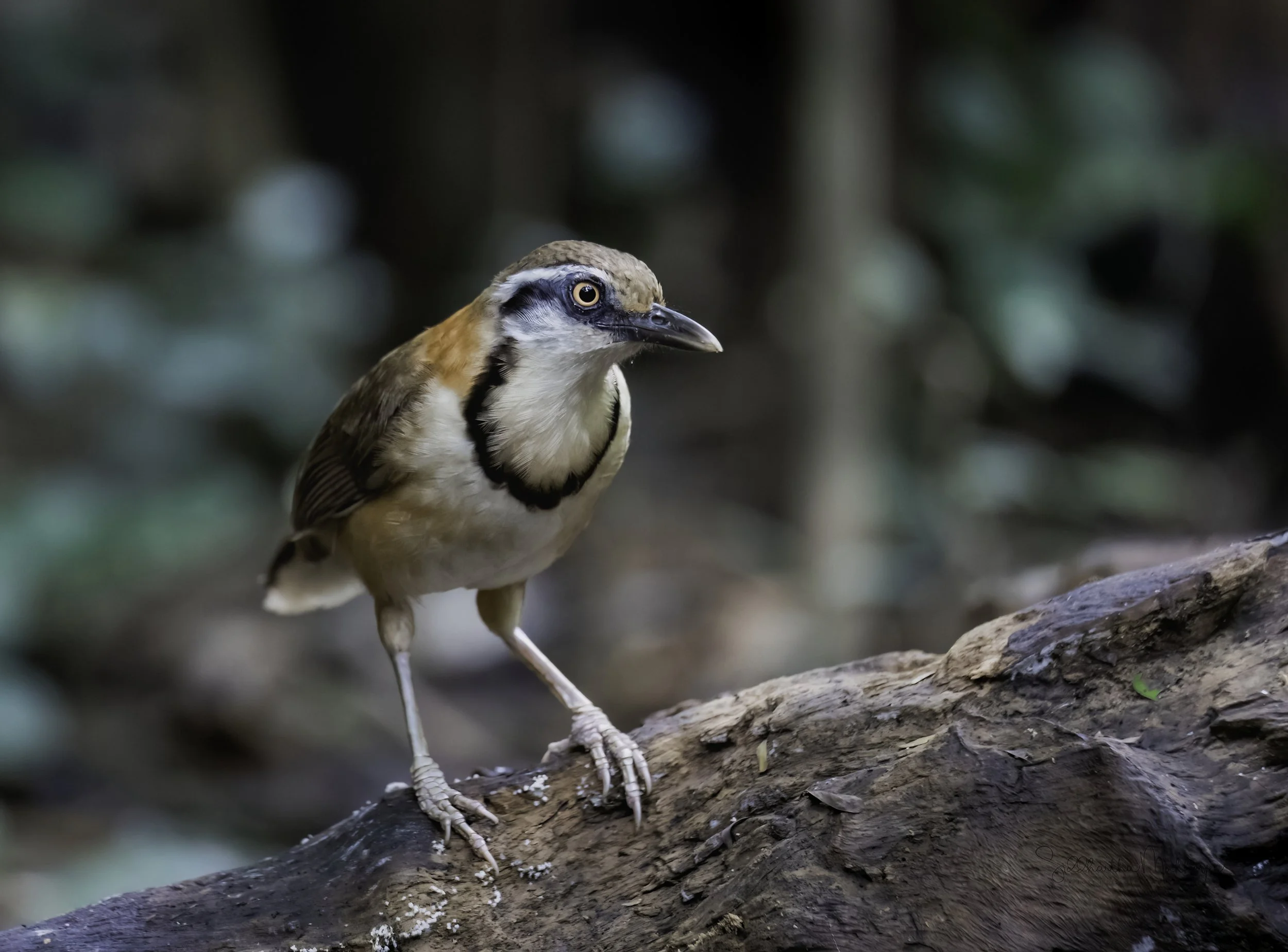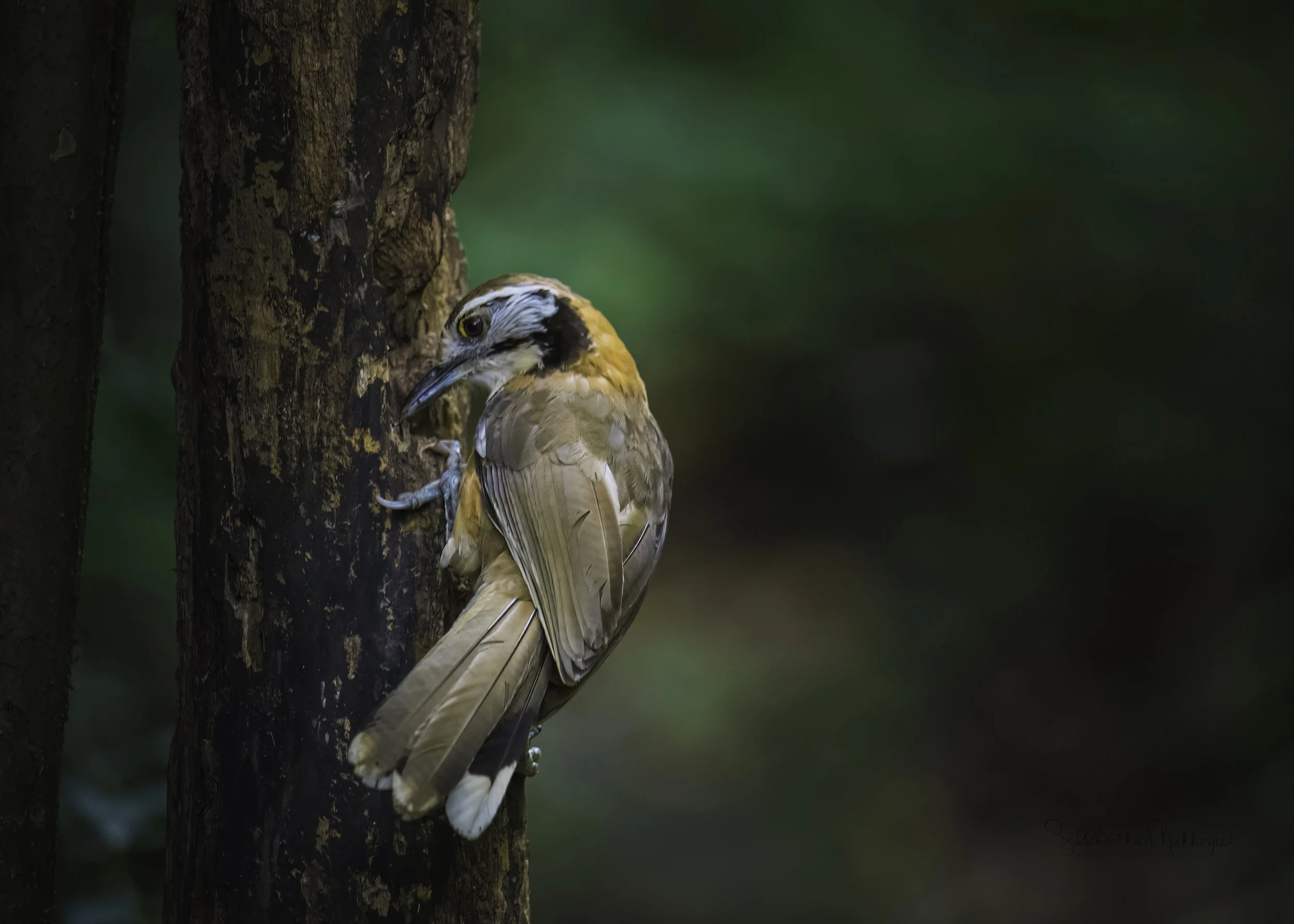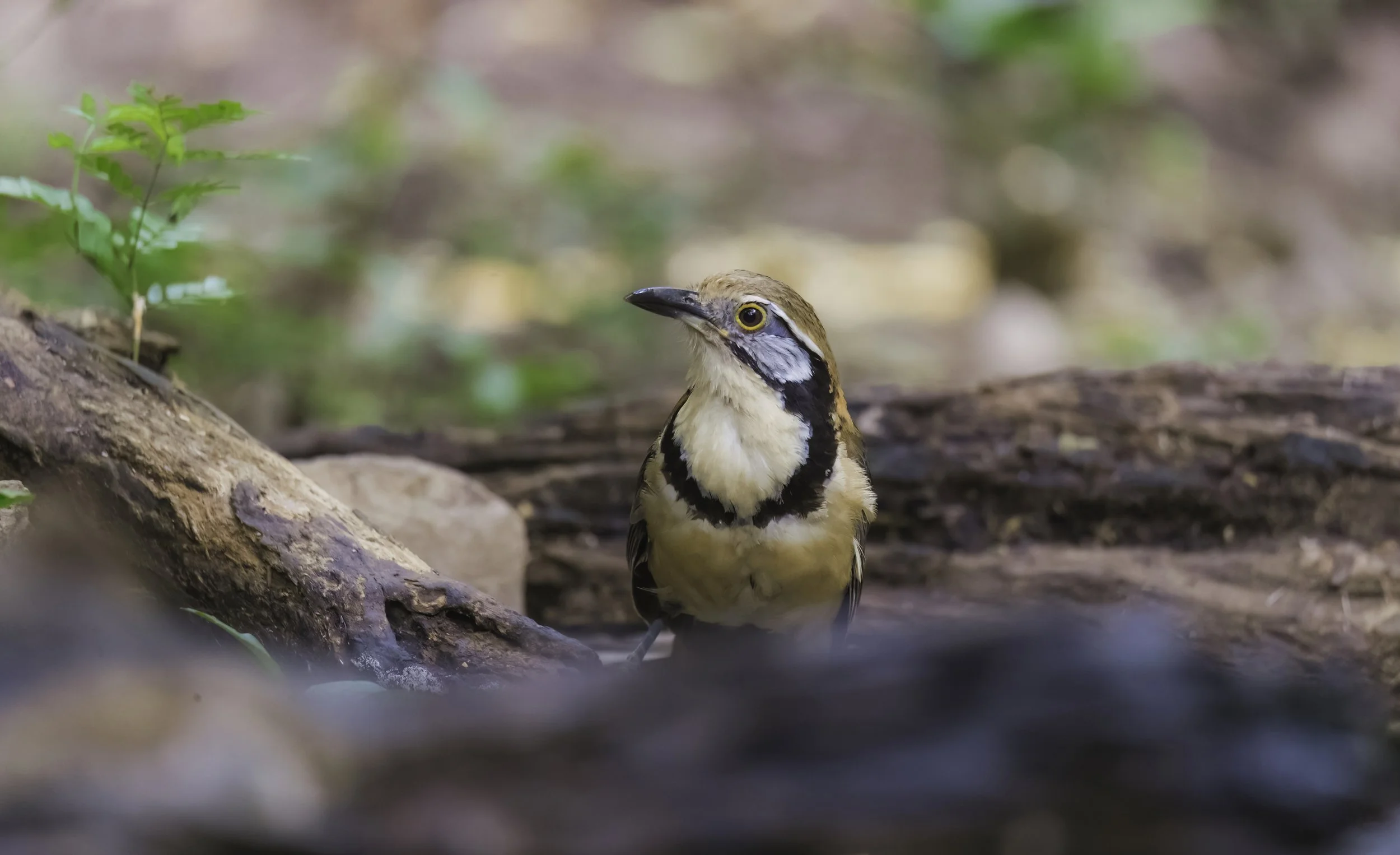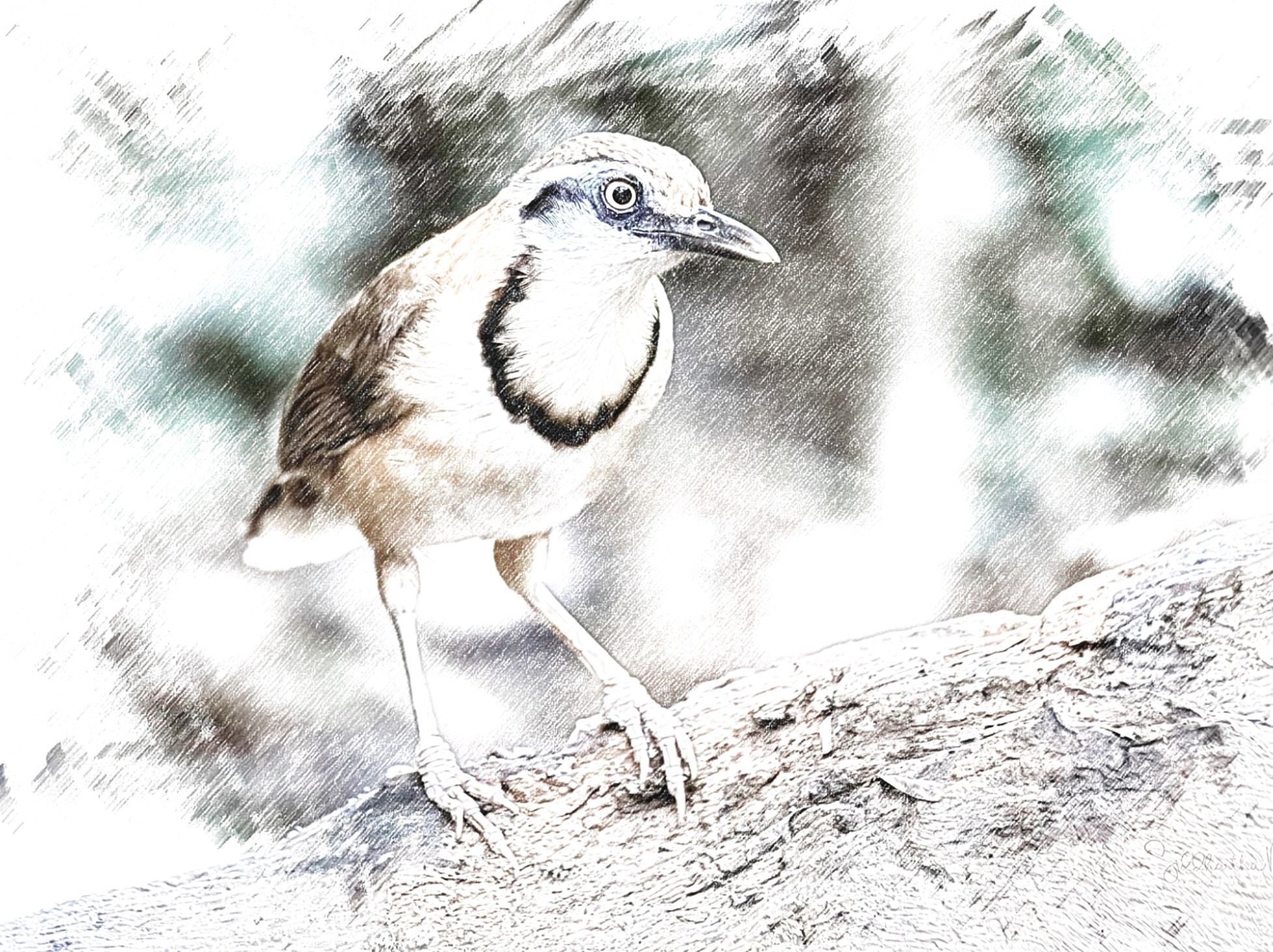Greater Necklaced Laughingthrush
Pterorhinus pectoralis
Kaeng Krachan National Park, Thailand
The eastern slopes of the Tenasserim Mountain Range is home to the Kaeng Krachan National Park and where the Pranburi & Phetchaburi Rivers originate. Kaeng Krachan National Park is the largest national park of Thailand on the border with Burma, contiguous with the Tanintharyi Nature Reserve. The park was declared a reserve in 1964 and on 12 June 1981 it became the 28th national park of Thailand. Originally covering an area of 2,478 km², it was enlarged in December 1984 to include the boundary area between Phetchaburi and Prachuap Khiri Khan Provinces, an additional 300,000 rai. The park has been included in the list of ASEAN Heritage Parks. Since 2011, Thailand has proposed that Unesco designate Kaeng Krachan National Park a world heritage site.
Here we spot the beautiful Greater Necklaced Laughingthrush (Pterorhinus pectoralis) - a species in the family Leiothrichidae.
The Greater Necklaced Laughingthrush is a large, long-tailed, thrush like bird of dense forests native to East and Southeast Asia. Note its black necklace, streaked white cheek patch, and pale band near the tip of the tail. Very similar to the Lesser Necklaced Laughingthrush; note the dark eye and ‘contained’ (completely encircled) cheek patch. A shy and difficult to see well bird it is usually found in small flocks in wet lowland and hill forest, often near streams. The song is a series of loud whistles, not as long or varied as that of Hwamei.
Kaeng Krachan National Park is located in Phetchaburi and Prachuap Khiri Khan Provinces, about 60 km from Phetchaburi and 75 km from Hua Hin. It is bounded by the Tanintharyi Nature Reserve along Myanmar's border to the west and part of the Western Forest Complex that covers 18,730 km² across 19 protected sites between Myanmar and Thailand. There are two main rivers in the park; Phetchaburi and Pran Buri Rivers. Both rivers originate from the Tanaosri Mountain Range. In the north, Phetchaburi River flows into Kaeng Krachan Dam and flows further east all the way out to the Gulf of Thailand. Pran Buri River flows south to Prachuap Khiri Khan Province, into Pran Buri Reservoir and out to the Gulf of Thailand.
The highest elevation in the park is a peak along the Burmese border at around 1,500 meters. The park is popular for wildlife which doesn’t necessarily mean it is easy. The possibilities depend on the seasons and seasonal conditions for various types of animals. Mammals like leopards, clouded leopards, bears, stump-tailed macaques, sambhar, barking deer, elephants, dholes, golden jackal, gaur, serows, crab-eating mongoose and tapirs can be spotted in the park. There also used to be a significant tiger population in the park up until a decade ago, but only a few are left now.
Langurs, stump-tailed macaques, white-handed gibbons, sambhar, mouse deer, porcupines, monitor lizards, civets and black giant squirrel are frequently seen. White-handed gibbons can be seen or heard nearly every day, often seen at the edge of the campsites.
Read about the wildlife of Kaeng Krachan National Park.
‡‡‡‡‡
Greater Necklaced Laughingthrush
The Greater Necklaced Laughingthrush (Pterorhinus pectoralis) is a species of passerine bird in the family Leiothrichidae. It is found in Bangladesh, Bhutan, China, India, Laos, Myanmar, Nepal, Thailand and Vietnam. It is introduced to the United States. Its natural habitats are subtropical or tropical moist lowland forest and subtropical or tropical moist montane forest. This species was formerly placed in the genus Garrulax but following the publication of a comprehensive molecular phylogenetic study in 2018, it was moved to the resurrected genus Pterorhinus.
It is about 26·5–34·5 cm long and weighs between 105–170 g. It is very like Garrulax monileger, but larger and with dark eyes. The necklace is often bolder with dark primary coverts. The nominate race has its crown and upperparts olive-tinged mid-brown, hind collar and upper mantle rufescent, wing fringes and central tail feathers as upperparts but outer primaries are fringed greyer and the primary coverts are darker than the rest of wing. The outer tail feathers are blackish-brown distally with broad white tips; the lores and side of forehead is whitish to buff, and there is a narrow whitish postocular supercilium from the eye to above rear of the ear-coverts. These ear-coverts are whitish and variably streaked dark greyish (to almost entirely black), the black eyestripe and moustachial stripe are meeting on the side of the neck and extending thence as broad black band down the side of the breast and across it (a prominent necklace). It is narrowest at mid-breast and the chin to upper breast is a pale buffy whitish. The area below the necklace is whitish, with a rufous wash on the flanks and vent. Partial albinos have been recorded. The iris is brown to crimson, the orbital skin is golden-yellow to yellowish-green with a blackish bill, greyer basal half of lower mandible. The legs are slate-grey to horn-green and sexes are similar. Juvenile is warmer above and sometimes also on the wings than the adult, often with pale tips and fringes of primary coverts, and has a dull necklace or is less distinct with a duller eyering. The Race subfusus is paler and greyer-tinged above than nominate, with the hind collar narrower and paler, the necklace is also narrower while the underparts are a more uniform pale rufescent buff, tail with buff-tinged tips; robini is smaller, with slightly darker, richer upperparts, hind collar narrower and more rufous-chestnut, necklace very narrow or broken in centre, lower breast and belly uniform rufescent buff; picticollis resembles robini in size and upperpart colour, but the hind collar is much broader and more rufous-chestnut, more prominent whitish lores extending over and under eye, black on neck side tipped greyish and that on necklace tipped buff; semitorquatus is smallest, like nominate above but washed more olive, hind collar narrow and rather weak, necklace variably broken in centre, underparts whitish to very pale buffy white, tail tips deep buff.
The following subspecies are recognised:
Pterorhinus pectoralis pectoralis - Distributed in the Himalayas of Nepal to s China (s Yunnan w of the Mekong R.)
Pterorhinus pectoralis subfusus - Distributed in SE Myanmar (including N Tenasserim) and NW and W Thailand.
Pterorhinus pectoralis robini - Distributed in extreme E Myanmar, S China (S Yunnan), N and C Laos and N Vietnam (Tonkin, N Annam).
Pterorhinus pectoralis picticollis - Distributed in EC, E and SE China (E Gansu and C and S Shaanxi E to N Hubei, S Jiangsu and NE Zhejiang, S to C Guizhou, Guangxi and Guangdong).
Pterorhinus pectoralis semitorquatus - Distributed in Hainan.
Species in same genus
Pterorhinus pectoralis - Greater necklaced laughingthrush
Pterorhinus sannio - White-browed laughingthrush
The Greater Necklaced is found in broadleaf evergreen forest, mixed deciduous forest and mixed broadleaf-coniferous forest, secondary growth, cut-over scrub, bamboo, plantations; in parts of Laos found in Fokienia-dominated forest and semi-evergreen forest. To 1830 m; in Bhutan once at 2000 m. It is a resident bird in these habitats.
They feed mostly on insects and also some fruits and are usually seen gregarious in flocks of 5 to 15 or, sometimes, up to 25 individuals, often in association with White-crested laughingthrush (Garrulax leucolophus) and Lesser Necklaced Laughingthrush (Garrulax monileger) (Cissa chinensis) and Greater Racquet-tailed Drongo (Dicrurus paradiseus), and sometimes kleptoparasitized by the latter. The Greater Necklaced forages mainly on the forest floor sometimes moving up to the middle storey.
Their apparent song types include repeated, clear, ringing, slightly descending and diminishing sequence, “kléér-éér-éér-éér-eer(…)” or just “kléér-éér”, and a sequence of alternating upslurred mellow whistles, “tu-twéétu-twéétu-twéé…” and a mixed series of loud, quavering, nervous “wee’i’i”, “wee’u” and “wee’ee’u” phrases. Calls include clear, rapid, nervous “chit-it(-it-it)”, louder and less mellow than peeping calls of the Lesser Necklaced Laughingthrush (Garrulax monileger); also they exhibit a variety of short nasal churring calls, and low, gruff contact notes.
They breed from Feb-Aug and are multi-brooded. The nest is a large, broad, bulky, rather shallow cup or saucer, made of dead bamboo or other leaves, roots, moss, bracken, grasses, twigs, sticks, weed stems, creeper stems and tendrils, lined with rootlets, fine grass stems, fine twigs and tendrils, place in the bush, small tree or bamboo clump, sometimes among grass, from almost ground level up to 6m up. The clutch is 3-7 eggs (usually 4 in India and Myanmar), bright or deep blue to pale greenish-blue. There is no information on incubation and nesting periods. Brood parasitism by the Chestnut-winged Cuckoo (Clamator coromandus) occurs.
The Greater Necklaced Laughingthrush is not globally threatened and classified as Least Concern. It is local and uncommon in Nepal, becoming more frequent farther East. It has occasionally been recorded resident in the foothills and Central & Eastern valleys in Bhutan, and present in the Thrumshingla National Park. The bird is frequent in India, where it is common in the Nameri National Park (Assam), and present elsewhere in North East India in (at least) Buxa Tiger Reserve, in West Bengal, where as many as 25 birds/km² in monoculture plantation, also Eaglenest Wildlife Sanctuary and Namdapha and Mouling National Parks, all in Arunachal Pradesh, Balphakram National Park, in Meghalaya, Barail Reserve Forest and Kaziranga National Park (common in latter), in Assam, and Ngengpui Wildlife Sanctuary and Dampa Tiger Reserve, in Mizoram. It is fairly common and sometimes abundant in S China, where recorded in 19 (35%) of 54 surveyed sites (of which 52 are nature reserves). There is a widespread but sparse population in Hong Kong of captive origin. It is generally uncommon to common in SE Asian range. Present in Kaeng Krachan National Park, in Thailand, which is where these photos were taken. It is also present in the Nakai-Nam Theun National Biodiversity Conservation Area (NBCA) and in Phou Dendin NBCA, in Laos and it is fairly common in Tam Dao National Park, and present in three protected areas in the Annamese lowlands, in Vietnam.
‡‡‡‡‡
Related Posts

